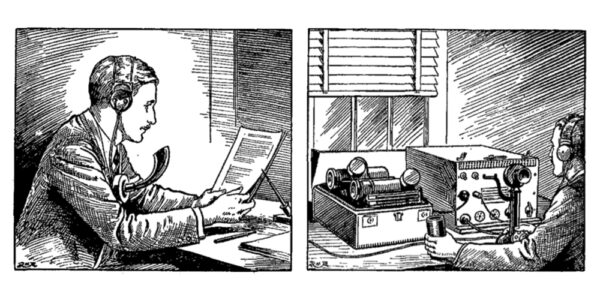Not many people know that the Adventist Review is the official record of General Conference proceedings, a tradition that goes back almost 160 years. If the COVID-19 pandemic had not interfered, this year’s sixty-third General Conference Session would have been held in Indianapolis, Indiana. We recently came across this memoir from someone involved with the General Conference Session held 90 years ago. We share it as a reminder of how things have changed, and how much things remain the same as we continue to use technology to share the everlasting gospel. We know little about the author, except that she apparently lived out her final years in the Loma Linda area.—Editors.
In 1930 I was a student, 19 years old, at what was then Washington Missionary College (now Washington Adventist University). I worked part-time in the stenographic pool of the circulation department at the Review and Herald Publishing House to help pay my college expenses. I had never been to a Seventh-day Adventist school; in fact, we were the only Adventist family in our whole town. To be among the saints at headquarters and work at the Review and Herald was next to being in the New Jerusalem.
In 1930, the General Conference was held in San Francisco. An earth-shattering decision had been made by the Review and Herald to print the “good ol’ Review” every day, which carried firsthand the highlights of the day’s events, and send the magazine every day to subscribers all around the world. This was before the electronic age, when even radio was still a novelty. To get the reports across the continent to the Review and Herald, print them the same day, and then send the magazine to the entire world seemed wishful thinking. This is how it was done.
“San Francisco Calling”
A telephone connection was set up at 7:00 p.m. eastern time,·4:00 p.m. in San Francisco. A pool of 10 to 12 stenographers stood ready to take messages over the phone. Two women worked at a time in case one missed a sentence or if something was unclear. This was before Dictaphones and tape recorders, so every word was taken down in shorthand. As soon as a notebook was full, that stenographer would go to her typewriter to transcribe it, and someone else would take her place at the telephone.
Soon that typewritten material would be sent to the next step in preparing it for the presses. This went on until about 10:00 p.m. (7:00 p.m. Pacific), just before the beginning of the evening service in San Francisco. You should know what it did for those of us who took part in that exhilarating experience in advancing the Lord’s work.
I was very young, just a beginning stenographer, so I was merely one of the back-ups who took dictation only when one of the more experienced secretaries needed to take a short break. I doubt if I took more than two hours of dictation during all the days of the conference. But in all humility, I can say there were times I felt a kindred spirit with those heavenly angels flying in midair carrying the everlasting gospel. It was a tremendously awesome experience to be part of making history.
What it did for the saints in Takoma Park is also wonderful to remember. Every household would have an early supper, then by 6:30 the front doors of the publishing house would open and families would walk (few had cars) joyously and happily toward the Review and Herald, like participants in a grand coronation. They filled the reception area, front offices, and jammed the halls.
At 7:00, when that click came from California saying, “San Francisco calling,” the girls put on their earphones to record the conversation. A holy and awesome silence fell upon the whole group for about three hours. The interesting thing is that they really couldn’t hear the telephone conversation—just an occasional question or affirmation from the one receiving the messages. The reverent silence was impressive.
Shortly after 10:00, the last of the notes had been transcribed and some of the pertinent news items shared. A spontaneous shout of joy from those assembled burst forth like the Hallelujah Chorus, for they had witnessed the “good ol’ Review” on its way again.
Some of the stalwarts stayed on into the night to hear the thump, thump, thump and swish, swish, swish of the paper as the presses printed the pages of the magazine.
Looking Forward
The most common topic of conversation among us poor innocents was the mind-boggling thought that the human voice could travel on a wire across a continent. Countless times we expressed the conviction that if humanity could devise anything so wonderful, how could anyone doubt that God hears prayers?
Now, 60 years later (1990), I sit in my living room with friends in Loma Linda and another General Conference is in session in Indianapolis. I’m not listening to a telephone conversation that I cannot really hear; I’m seeing it live and in living color, all the proceedings, including the glorious music. In many instances, the reception is better and more close-up than for those attending in person. This time the thought that wells up in our hearts is how anyone can doubt that when Jesus returns every eye will see Him. “Come, Lord Jesus” (Rev. 22:20).



